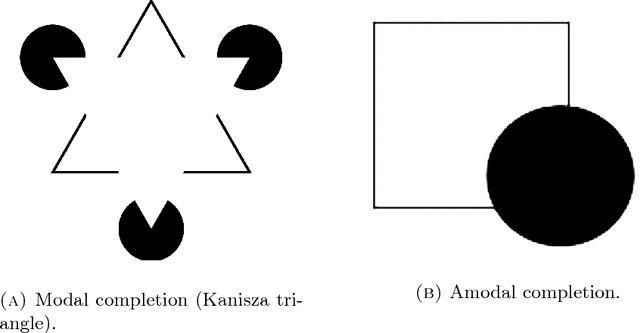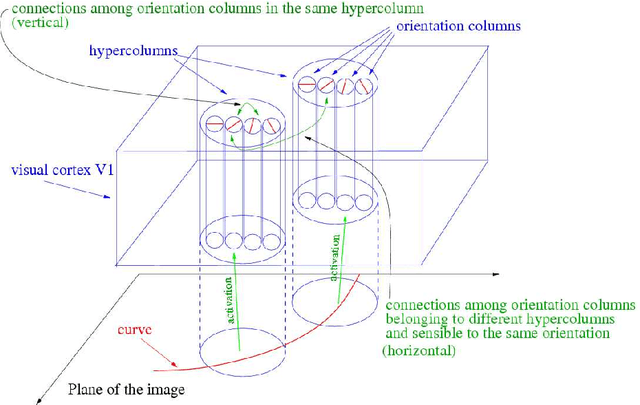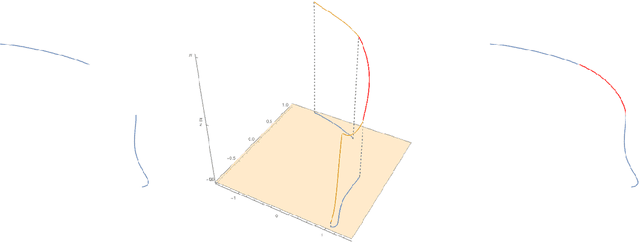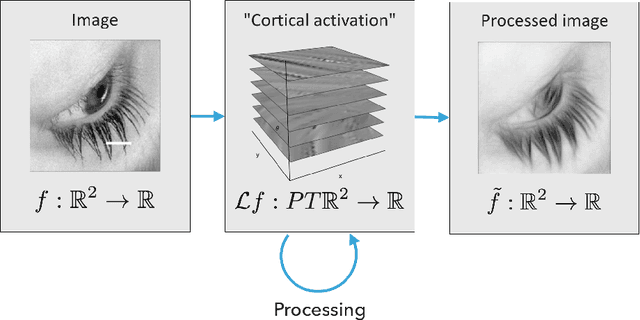Ugo Boscain
CNRS, LJLL
An auditory cortex model for sound processing
Mar 08, 2021



Abstract:The reconstruction mechanisms built by the human auditory system during sound reconstruction are still a matter of debate. The purpose of this study is to refine the auditory cortex model introduced in [9], and inspired by the geometrical modelling of vision. The algorithm transforms the degraded sound in an 'image' in the time-frequency domain via a short-time Fourier transform. Such an image is then lifted in the Heisenberg group and it is reconstructed via a Wilson-Cowan differo-integral equation. Numerical experiments on a library of speech recordings are provided, showing the good reconstruction properties of the algorithm.
Highly corrupted image inpainting through hypoelliptic diffusion
Apr 05, 2018



Abstract:We present a new image inpainting algorithm, the Averaging and Hypoelliptic Evolution (AHE) algorithm, inspired by the one presented in [SIAM J. Imaging Sci., vol. 7, no. 2, pp. 669--695, 2014] and based upon a semi-discrete variation of the Citti-Petitot-Sarti model of the primary visual cortex V1. The AHE algorithm is based on a suitable combination of sub-Riemannian hypoelliptic diffusion and ad-hoc local averaging techniques. In particular, we focus on reconstructing highly corrupted images (i.e. where more than the 80% of the image is missing), for which we obtain reconstructions comparable with the state-of-the-art.
* 15 pages, 10 figures
Cortical-inspired image reconstruction via sub-Riemannian geometry and hypoelliptic diffusion
Jan 11, 2018



Abstract:In this paper we review several algorithms for image inpainting based on the hypoelliptic diffusion naturally associated with a mathematical model of the primary visual cortex. In particular, we present one algorithm that does not exploit the information of where the image is corrupted, and others that do it. While the first algorithm is able to reconstruct only images that our visual system is still capable of recognize, we show that those of the second type completely transcend such limitation providing reconstructions at the state-of-the-art in image inpainting. This can be interpreted as a validation of the fact that our visual cortex actually encodes the first type of algorithm.
 Add to Chrome
Add to Chrome Add to Firefox
Add to Firefox Add to Edge
Add to Edge